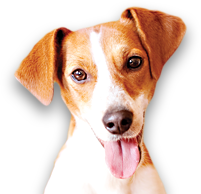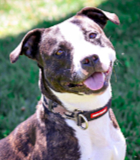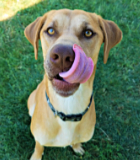HOUSE TRAINING
- This topic has 0 replies, 1 voice, and was last updated 16 years, 4 months ago by
Mackenzie’s Admin.
-
AuthorPosts
-
January 23, 2009 at 2:05 am #317
Mackenzie’s Admin
MemberHouse Training Puppies and Dogs
If given a choice, dogs prefer to eliminate away from the areas where they eat, sleep, and play. Dogs eliminate in the house for a variety of reasons:
– There might be a medical cause for the problem.
– The dog might not have been properly trained to eliminate outside.
– The dog might be marking his territory.
– The dog might urinate when excited, intimidated, anxious or upset.House training is accomplished by establishing a surface and location preference AND by preventing the dog from eliminating in unacceptable places. Crating and confinement needs to be kept to a minimum, but some amount of restriction is usually necessary for the puppy or dog to learn to “hold it.” Understand that house training demands an investment of time and effort. Puppies are sometimes not fully house trained until they are 8-12 months of age. As a general rule, a puppy can only hold his waste for the same number of hours that he is old, in months. In other words, a four-month-old pup should not be left alone during the day longer than four consecutive hours without an opportunity to go outside. By the time the pup is four months old, he should be able to make it through the night without going outside. Adult dogs adopted from shelters are often not fully housetrained and need a refresher course.
What to do:
1. Keep the dog on a consistent daily feeding schedule and remove food between meals.
2. Know where your dog is at all times. To anticipate and prevent accidents, you need to watch for early signs that he needs to eliminate. These signs include pacing, whining, circling, sniffing and leaving the room. If you see any of these, take the dog outside as quickly as possible. Not all dogs learn to let their owner know they need to go outside by barking or scratching at the door. Some will pace a bit and then just eliminate inside.
3. If you cannot watch the dog, confine him to a crate, a small room (with the door closed or baby-gated), or tether him to you with a leash that does not give him much leeway. Gradually, over days or weeks, give the dog more freedom. If the dog eliminates outside, give him some free time in the house (maybe 15-20 minutes to start). If all goes well, gradually increase the amount of time out of confinement.
4. Accompany the dog outside and reward him with praise, treats, play, or a walk whenever he eliminates outdoors. It’s best to take the dog to the same place each time, as the smells may prompt the dog to eliminate. Some dogs will eliminate early on in a walk; others need to move about and play for a bit first.
5. Take the dog outside on a consistent schedule. Puppies should be taken out every hour, as well as shortly after meals, playtime and naps. All dogs should get out first thing in the morning, last thing at night, and before being confined or left alone. Adult dogs must get out at least four times a day.
6. If you can catch the dog in the act of eliminating inside, SHRIEK loudly. Immediately run to the dog and rush him outside. If he is small, pick him up; otherwise, just grab him by the collar and run outside with him. The idea is to startle him, which should stop him in mid-stream. Allow the dog to finish outside, and reward him. If you do not catch the dog in the act, do not do anything to the dog.
7. Clean accidents with an enzymatic cleanser to minimize odors that might attract the dog back to the same spot.
What not to do:
– Do not rub the dog’s nose in his elimination.
– Do not scold the dog, unless you catch him in the act of eliminating in an inappropriate place.
– Never, ever physically punish the dog for accidents; that includes hitting with a rolled-up newspaper.
– Do not crate your dog if he is soiling in the crate.
– If the dog enjoys being outside, don’t bring the dog inside right after he eliminates—he may learn to “hold it” to stay outside.
– Do not use an ammonia-based cleanser. As urine contains ammonia, this could attract the dog back to the same spot to urinate again.Above all, please be patient! If a puppy has an accident, it is not because he is spiteful or lacking in the ability to learn—it’s because the owner failed to adequately supervise him, didn’t take him outside frequently enough, or ignored or was unaware of the dog’s signals to go outside.
Canine Paper Training
Before we begin, we must make it clear—it is far preferable to teach a dog right from Day One that outside is the place to eliminate.We don’t recommend paper training unless there is a specific reason why it is necessary— if you have a puppy and live in a high-rise apartment, for example, or if you have an untrained dog or puppy and you have mobility problems. Training a puppy or dog to eliminate indoors results in confusion when you first attempt to take him outdoors to eliminate. By this time, he has learned that it is acceptable to eliminate in the home and may have developed a preference for eliminating on a specific substrate, such as papers, housetraining pads or adult diapers.
Training a puppy or dog to use a papered area in your home is accomplished in essentially the same manner as training him to eliminate outside. First, confine the puppy or dog for a period of time so that he is reluctant to eliminate, and then bring him, on leash, to the paper. Wait until the dog eliminates, and praise and reward him with treats for eliminating in the correct place. If the dog has an accidents anywhere but on the paper, you should shriek to startle him, pick the dog up or take him by the collar and run to the paper so he can finish in the appropriate place. Restrict the dog’s access to a small area of the home so you can monitor his whereabouts. If you gradually increase the dog’s access to new areas of the house, you will maintain his inclination to return to the papered area. If you are unable to keep an eye on him, he should be confined to a small area where he will not eliminate until he is fully trained.
Some dogs are sloppy about staying within the boundaries of the paper. Make sure the papers are replaced frequently, so the dog is not forced to move off the paper to avoid getting his feet soiled. It often helps the dog to understand exactly where he should eliminate if you somehow delineate the space with a visual marker. You can set up low garden fencing to surround the area with an opening for the dog to move through, or provide your dog with an indoor bathroom, such as the Patio Park. These contain a two- by four-foot section of grass, kept alive by a self-irrigation system. The grass is surrounded by a white-picket fence and fronted with a yellow fire hydrant. The sod needs to be sprayed regularly with odor neutralizer and replaced monthly. A less attractive, but highly effective alternative solution is to place a plastic tarp on your balcony (it must be enclosed, please!) and cover the tarp with grass sod. The benefit of using sod is that the dog develops a preference for eliminating on grass, and so will be equally comfortable eliminating outdoors.
-
AuthorPosts
- You must be logged in to reply to this topic.












































